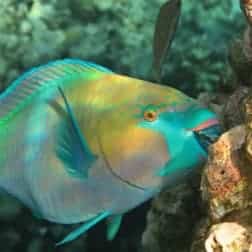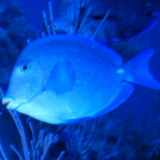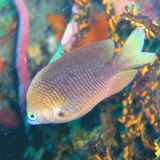Herbivorous Coral Reef Fishes
Herbivorous coral reef fishes are those fish species that feed entirely or mainly on plant material found in coral reef ecosystems.
Among coral reef fishes there are a comparatively few groups that have become adapted for such a life style.
Thus, the number of this type of feeder is comparatively small among coral reef fishes. For example, in the Caribbean region, herbivorous coral reef fishes comprise only about 10% of the total number of coral reef fish species.
Although the number of species of plant eating reef fishes is relatively small, they are often present in large numbers, and some attain large size.
It has been estimated that on Caribbean reefs, herbivorous coral reef fishes dominate in terms of fish biomass at depths of less than about 30 feet (where there is abundant sunlight to promote rapid plant growth), with carnivorous fishes dominating at greater depths.




